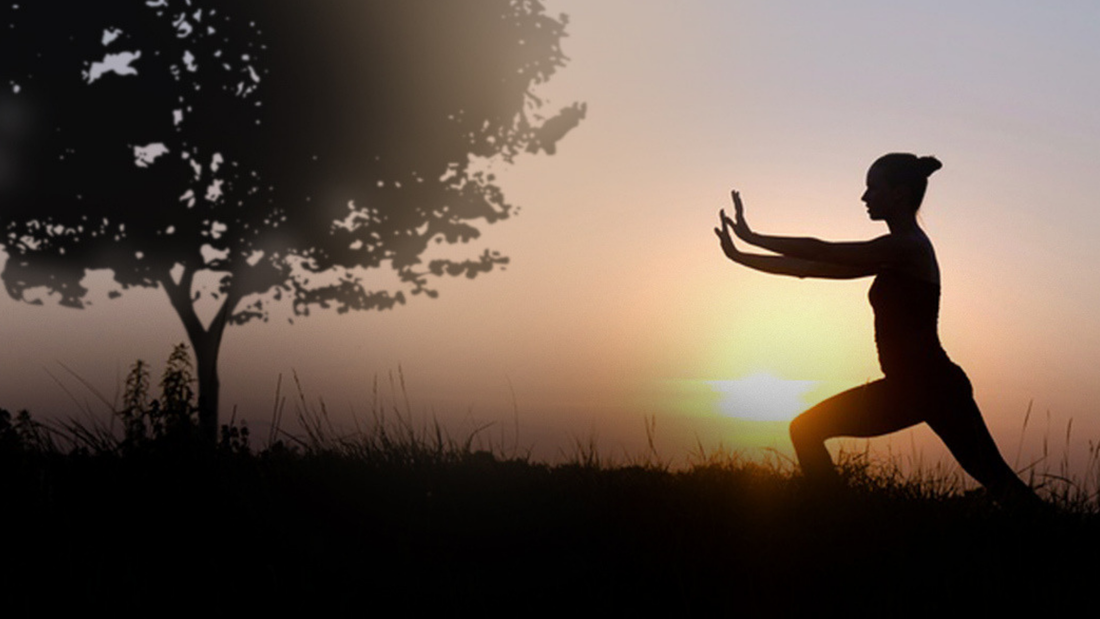Bali’s Hidden Calm: 10 Essential Tai Chi & Qigong Studios to Explore in 2025!
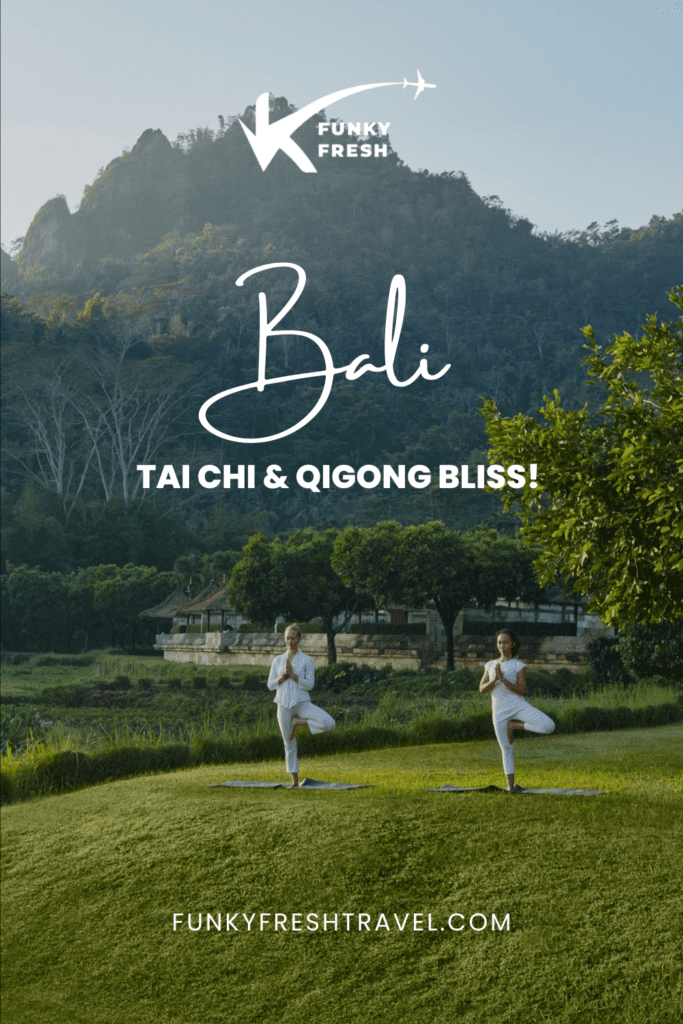
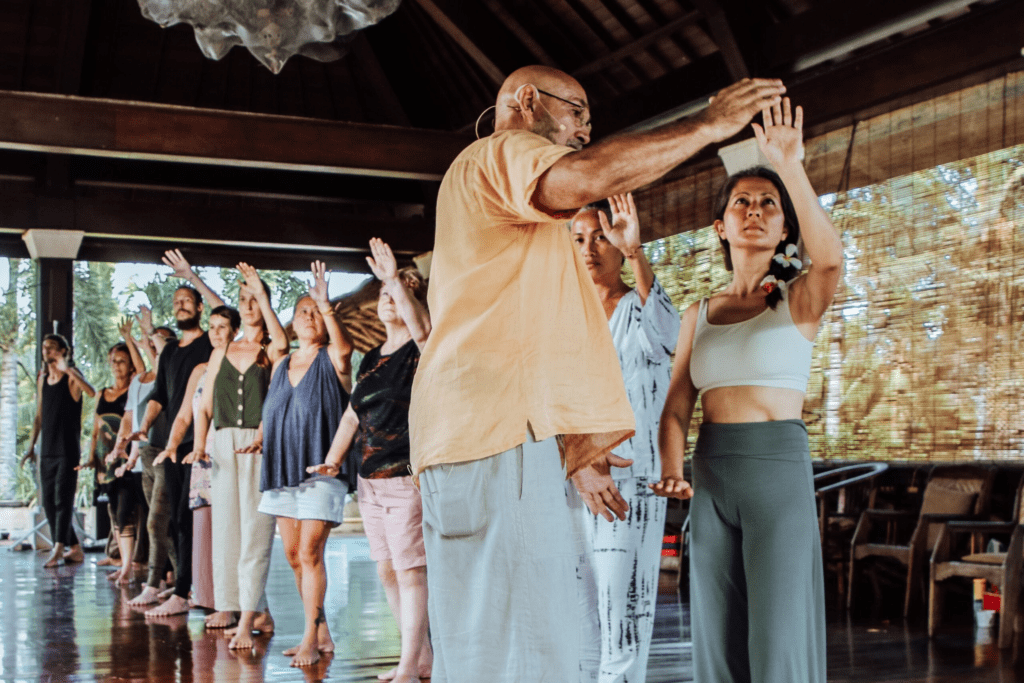
As a travel blogger who has traversed the globe in search of unique experiences, I can confidently say that Bali offers some of the most transformative Tai Chi and Qigong classes I’ve ever encountered. The island’s lush landscapes and spiritual energy create the perfect backdrop for these ancient Chinese practices, allowing practitioners to connect deeply with both nature and their inner selves. In this comprehensive guide, I’ll take you through my personal journey of discovering the best Tai Chi and Qigong classes in Bali, sharing insights that will help you embark on your own path to serenity and well-being.
The Magic of Tai Chi and Qigong in Bali’s Natural Paradise
Bali, often referred to as a tropical paradise, offers a unique and enriching environment for practicing Tai Chi and Qigong. The island’s natural beauty and serene landscapes provide an ideal backdrop for these ancient practices, enhancing their benefits and deepening the connection between practitioners and nature.
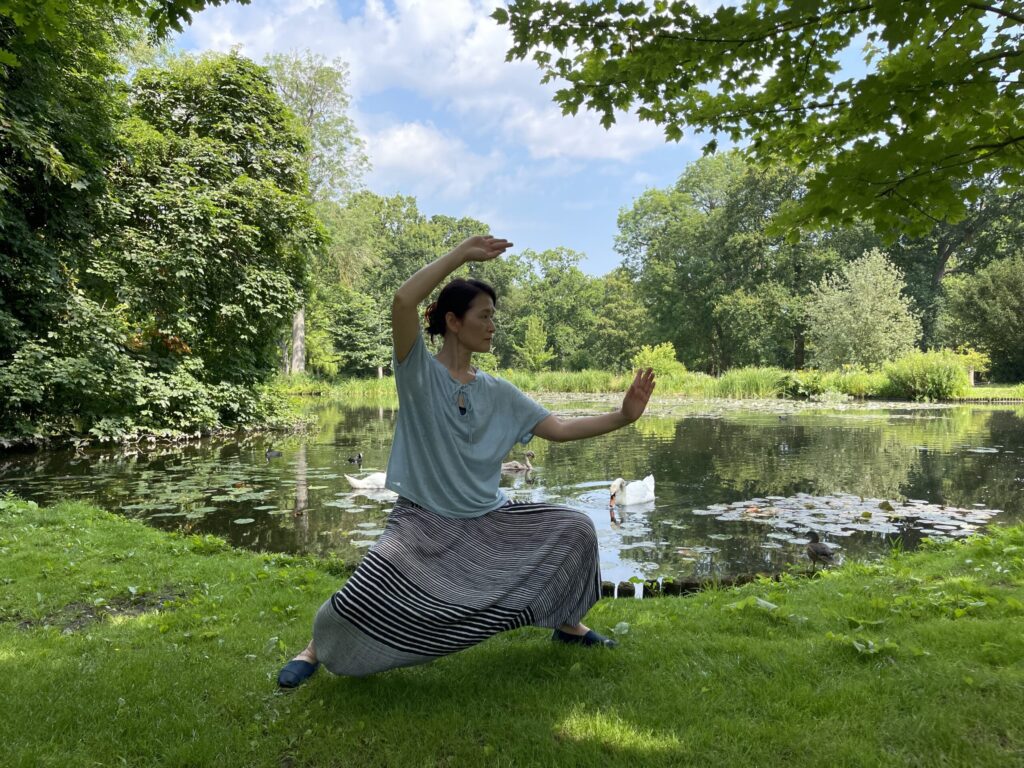
As I stood amidst the lush rice terraces of Ubud, performing the flowing movements of Tai Chi, I felt a profound sense of harmony with my surroundings that I had never experienced before. The natural setting of Bali, with its tranquil beaches and verdant hills, creates a serene and peaceful atmosphere that is incredibly conducive to meditation and mindfulness practices. This environment is not only visually stunning but also spiritually enriching, making it a perfect location for holistic practices like Tai Chi and Qigong.
One of the most remarkable aspects of practicing these ancient arts in Bali is the deep connection with nature that it fosters. The movements in Tai Chi, which are inspired by the elements of nature such as water and wind, take on a new level of meaning when performed in an environment that embodies these elements. During my outdoor sessions, I could feel a deeper kinship with the environment, experiencing the elements firsthand in a way that enhanced my practice significantly. Imagine the gentle rustle of palm leaves, the distant sound of waves, or the cool mist from a waterfall – these elements become an intrinsic part of your practice, grounding you and amplifying the flow of pure natural energy.

Many practitioners seek out Bali for its potential to offer truly immersive mountain retreats, where the crisp air and panoramic views elevate their practice. The island’s diverse topography, from volcanic peaks to tranquil valleys, provides an array of serene spots ideal for fostering inner peace. Practicing Tai Chi and Qigong surrounded by such pristine beauty allows for an unparalleled connection to the Earth’s vital energy, or Qi. I found that these natural settings, far from the distractions of urban life, significantly deepened my meditative states and enhanced the overall effectiveness of the exercises. The serene energy of Bali’s natural wonders makes it a truly great place to embark on a journey of self-discovery through these ancient disciplines.
Looking for more information about Bali?
- What to do in Bali with itinerary
- Best studios and yoga retreats in Bali
- Best sunset bars in Bali
- Best traditional food in Bali
- Best surf beaches in Bali
- Best meditation in Bali
The Health Benefits of Tai Chi and Qigong: A Personal Transformation
Before delving into the specific classes and locations, it’s important to understand why Tai Chi and Qigong have become so popular, not just in Bali, but worldwide. These practices offer a myriad of health benefits that I’ve personally experienced during my time on the island. My journey began with curiosity, but it quickly evolved into a profound appreciation for the transformative power of these arts, impacting both my physical and mental well-being.
Physical Health Benefits
Improved Balance and Fall Prevention: As someone who has always been a bit clumsy, I was amazed at how Tai Chi improved my balance. Studies have shown that Tai Chi can reduce falls by an impressive 43-50%, which is particularly beneficial for older adults. I noticed a significant improvement in my proprioception – my body’s ability to sense its position in space – as well as enhanced muscle strength and flexibility. The slow, controlled movements of Tai Chi train the body to maintain stability, even on uneven terrain, which is particularly useful when navigating Bali’s sometimes challenging landscapes. This enhanced physical control also translates into greater confidence in daily activities.
Muscle Strength and Flexibility: Regular practice of Tai Chi has improved both my upper and lower body strength, comparable to what I’ve achieved through resistance training and brisk walking. The gentle, flowing movements have also enhanced my flexibility, which I’ve found crucial for maintaining mobility and preventing injuries. Unlike high-impact exercises, Tai Chi builds strength through continuous, fluid motion, engaging muscles in a way that is gentle on joints. This makes it an ideal practice for individuals of all ages and fitness levels looking to build true health without excessive strain.
Cardiovascular and Respiratory Health: I was surprised to learn that Tai Chi is recommended for people with coronary disease and chronic obstructive pulmonary disease (COPD). During my practice, I could feel my breathing becoming deeper and more regulated, which has had a positive impact on my overall cardiovascular health. The emphasis on deep, diaphragmatic breathing in both Tai Chi and Qigong helps to oxygenate the blood more efficiently, improve lung capacity, and reduce strain on the heart. This gentle yet effective cardiovascular workout contributes significantly to overall well-being.
Chronic Pain Management: While I don’t personally suffer from chronic pain, I met several practitioners in Bali who found relief from conditions such as rheumatoid arthritis and fibromyalgia through Tai Chi. It’s even recommended for osteoarthritis of the hip, hand, and knee by the American College of Rheumatology. The gentle movements and focus on relaxation help to reduce inflammation and stiffness, improving joint mobility and alleviating discomfort. For many, Tai Chi and Qigong offer a non-pharmacological approach to managing chronic pain, providing a path to improved quality of life.
Mental Health Benefits

Stress Reduction and Mental Well-being: Perhaps the most profound benefit I experienced was the reduction in stress and improvement in my overall mood. The combination of gentle movements, focused breathing, and mindfulness in both Tai Chi and Qigong created a sense of calm that stayed with me long after each session. In today’s fast-paced world, finding moments of tranquility is vital, and these practices provide an accessible way to achieve deep relaxation and mental clarity. The serene environment of Bali further amplifies these effects, creating an ideal setting for profound stress relief.
Cognitive Function: While it might be too soon to tell in my case, studies have linked Tai Chi to improved cognitive function and a lower incidence of dementia. I certainly felt more mentally alert and focused after my practices. The intricate choreography of Tai Chi forms, combined with the mindful focus required, challenges the brain in a unique way, potentially enhancing memory, attention, and executive functions.
Mind-Body Connection: The integration of body movements, breathing, and mental focus in Tai Chi and Qigong has significantly enhanced my mind-body connection. I’ve found myself more aware of my body’s signals and better able to respond to them in daily life. This heightened awareness empowers practitioners to listen to their bodies, identify areas of tension or imbalance, and work towards holistic well-being. This deeper connection fosters a sense of inner peace and resilience, equipping individuals to navigate life’s challenges with greater ease.
The Best Tai Chi and Qigong Classes in Bali: My Personal Recommendations
Now, let me take you on a journey through the best Tai Chi and Qigong classes I discovered during my time in Bali. Each of these locations offers a unique experience that caters to different preferences and skill levels. These recommendations are born from personal experience and conversations with fellow practitioners, ensuring you find a great place to start or deepen your practice.
1. ADDA YOGA, Canggu
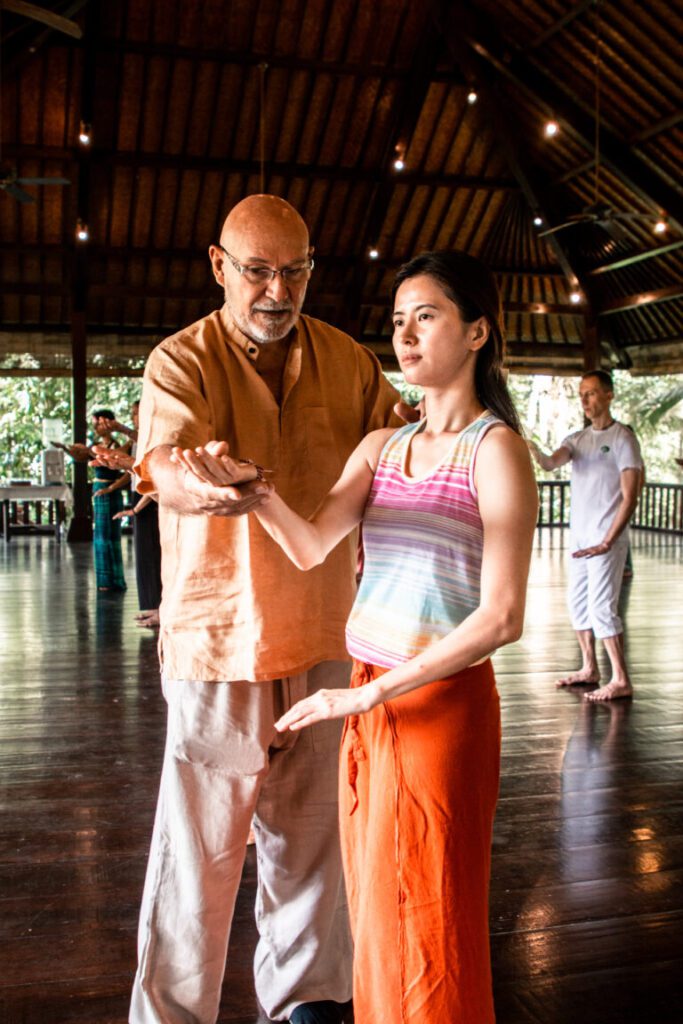
Located in the vibrant area of Canggu, ADDA YOGA quickly became one of my favorite spots for Tai Chi and Qigong practice. The studio offers a tranquil environment that perfectly merges the island’s natural energy with the ancient wisdom of Qigong. What sets ADDA YOGA apart is its team of highly skilled instructors who bring expertise in Traditional Chinese Medicine to their classes. This unique blend of ancient practices and modern medical insights provided a depth to the sessions that I hadn’t experienced elsewhere. The classes cater to all levels, from beginners to advanced practitioners, which I found particularly helpful as I progressed in my practice. The emphasis on the healing power of nature and energy meditation resonated deeply with me, especially when combined with Bali’s natural beauty. Their approach truly embodies the principles of holistic healing, making it an excellent choice for anyone seeking a comprehensive Qigong experience.
Check their website HERE
2. Tai Chi Bali, Ubud

For those looking for a more immersive experience, Tai Chi Bali in Ubud offers comprehensive teacher training courses and retreats in the mountains of North Bali. I had the privilege of attending one of these retreats, and it was truly a life-changing experience. Led by experienced instructors like Dave West, the retreats guide students through both fundamental and advanced Tai Chi and Qigong practices. The training includes Taoist breathing, energy meditation, and Tai Chi 24 Forms. What I found most remarkable was the setting – sessions were often held near lakes and waterfalls, allowing us to tap into the abundant Qi of nature. Imagine practicing your forms as the morning mist rises over a serene lake, or the sound of a nearby waterfall provides a natural rhythm to your movements. One traveler I met during the retreat shared their experience of having private lessons with Dave in Ubud. They were impressed by his knowledge, teaching skills, and professionalism, which echoed my own experience. Dave West’s dedication to the ancient art of Tai Chi & Qigong is evident in every class, making Tai Chi Bali a top recommendation for serious practitioners.
Check their website HERE
3. Forest Rock Qigong, Ubud

For those seeking a more intensive Qigong experience, Forest Rock Qigong, Ubud is the place to go. Known for its intensive training sessions, this program focuses on developing stillness, peace, and strength. What I appreciated most about Forest Rock Qigong was its deep roots in Traditional Chinese Medicine combined with a modern perspective on Qigong. The training is designed to create more energy, strength, and stamina, making it suitable for those looking to deepen their practice. During my time there, I noticed a significant increase in my energy levels and overall sense of vitality. The instructors’ emphasis on the principles of Qigong and their ability to explain complex concepts in accessible terms made the experience both educational and transformative.
One of the key figures behind Forest Rock Qigong is the founder of Forest Rock Qigong himself, a true master of his craft. He is not only an experienced Qigong practitioner but also a doctor of Traditional Chinese Medicine, possessing years of both treating people and teaching these ancient arts. His profound understanding of the human body and energy systems, combined with his extensive clinical experience, brings a unique depth to the Qigong instruction. His background, which reportedly includes service in the New Zealand Army, further underscores his discipline and dedication, traits that are clearly reflected in the rigorous yet rewarding curriculum at Forest Rock Qigong. Under his guidance, students learn not just the physical movements but also the intricate philosophy and medical applications behind each practice. This makes Forest Rock Qigong an unparalleled destination for serious students of Qigong and TCM. This establishment is a prime example of a TCM acupuncture clinic integrated with Qigong practice, offering comprehensive healing. Furthermore, with a qualified Chinese medical herbalist on staff, the holistic approach to wellness is truly remarkable, providing insights into both internal and external methods of healing and vitality.
Check their website HERE
Unique Features of Tai Chi and Qigong in Bali
What makes practicing Tai Chi and Qigong in Bali truly special are the unique features that set it apart from practicing anywhere else in the world:

Integration with Nature: Many of the classes I attended were conducted in natural settings – forests, mountains, and near water bodies. This integration with nature not only enhanced the practice but also allowed me to connect deeply with the natural energy of the surroundings. The feeling of performing Tai Chi movements as the sun rose over the rice paddies is something I’ll never forget. Imagine the calming sound of water flowing, the gentle breeze, and the warmth of the sun on your skin, all enhancing your focus and deepening your connection to the vital life force, Qi. These natural classrooms foster a sense of grounding and tranquility that is often difficult to replicate in indoor studios.
Cultural Enrichment: Bali’s rich cultural backdrop provides a unique context for these practices. The island’s spiritual atmosphere complements the meditative aspects of Tai Chi and Qigong, offering a holistic experience that goes beyond physical exercise. I found that learning about Balinese culture alongside my Tai Chi practice added a depth of understanding to the philosophical aspects of the art. The Balinese reverence for nature and their daily spiritual practices seamlessly align with the core tenets of Tai Chi and Qigong, making the integration feel natural and profound. The local emphasis on balance and harmony, evident in every aspect of Balinese life, resonates deeply with the yin and yang principles central to these Chinese arts.
Diverse Offerings: From beginner classes to advanced teacher training, Bali offers a wide range of options for practitioners at all levels. This diversity ensured that as I progressed in my practice, I could always find a program that suited my needs and challenged me to grow. Whether you’re looking for a casual session on the beach, an intensive retreat in the mountains, or specialized instruction from a doctor of Traditional Chinese Medicine, Bali has something to offer. The availability of classes taught by a Chinese medical herbalist or those incorporating the insights of a founder of Forest Rock Qigong ensures a high level of expertise and varied approaches to learning. For those seeking healing, the potential to combine practice with visits to hot springs found across the island adds another layer of therapeutic benefit, where the mineral-rich waters can soothe muscles and enhance relaxation, further deepening the overall wellness experience.
READ MORE Finding Your Inner Peace: A Guide to the Best Meditation Classes in Canggu
Personal Experiences and Transformations
Throughout my journey exploring Tai Chi and Qigong in Bali, I encountered numerous travelers and practitioners who shared their transformative experiences. One student I met during a retreat in Ubud spoke about how Qigong practice had helped sharpen their focus and bring emotional balance and stability to their life. They described feeling a renewed sense of purpose and calm, even amidst personal challenges. Another memorable encounter was with a practitioner who had found an excellent Sifu (master) in Bali. They were particularly enthusiastic about the practice of Push Hands, a Tai Chi technique that they felt had significantly improved their understanding of energy flow and body awareness. This practitioner, having trained in various locations, emphasized that the instruction in Bali, particularly from those with a background in Traditional Chinese Medicine, provided an unparalleled depth to their learning.

These personal stories, combined with my own experiences, reinforced the power of practicing Tai Chi & Qigong in Bali’s unique environment. The island’s natural beauty, coupled with the expertise of the instructors and the supportive community of fellow practitioners, created an atmosphere conducive to deep learning and personal growth. Many spoke of the profound insights gained during mountain retreats, where the solitude and breathtaking scenery allowed for profound self-reflection and connection with the natural world. The opportunity to learn from a founder of Forest Rock Qigong or a doctor of Traditional Chinese Medicine further elevates the experience, providing access to generations of accumulated wisdom.
I wrote more than 70 articles about the Island of Bali: Bali on a budget , Is it safe to travel to Bali ? , Best temples in Bali , Cheapest time to visit Bali , Best waterfalls in Bali
Embracing the Principles of Tai Chi and Qigong in Bali

As I delved deeper into my practice, I began to understand the profound principles underlying Tai Chi and Qigong. These ancient arts are based on the harmonization of opposites, a concept derived from Daoism. This harmonization is believed to produce Qi, the vital energy that powers all living things. In Bali, I found that the island’s natural environment and cultural emphasis on balance perfectly complemented these principles.
The Ten Essential Principles of Yang Chengfu, which include maintaining an upright posture, using intent rather than force, and seeking stillness within movement, became more than just theoretical concepts – they were living, breathing aspects of my daily practice. The continuous flow of energy, the rooting to the earth, and the gentle yet powerful movements all contributed to a profound sense of inner harmony. The integration of Tai Chi and Qigong into Bali‘s culture felt seamless, thanks to the island’s openness to diverse spiritual practices. The Balinese emphasis on balance and harmony resonated deeply with the core principles of these Chinese arts, creating a unique synergy that enhanced my practice experience. The wisdom of Traditional Chinese Medicine, often taught by a doctor of Traditional Chinese Medicine or a Chinese medical herbalist, provided a scientific framework for understanding the energy pathways and healing aspects of the practices.
READ MORE: Check our full guide about Bali with Itinerary HERE
Conclusion: A Journey of Self-Discovery and Wellness
My exploration of Tai Chi and Qigong classes in Bali has been nothing short of transformative. From the serene rice terraces of Ubud to the vibrant energy of Canggu, each location offered a unique perspective on these ancient practices. The combination of expert instruction, breathtaking natural settings, and the island’s spiritual atmosphere created an unparalleled environment for deepening my practice and connecting with my inner self.
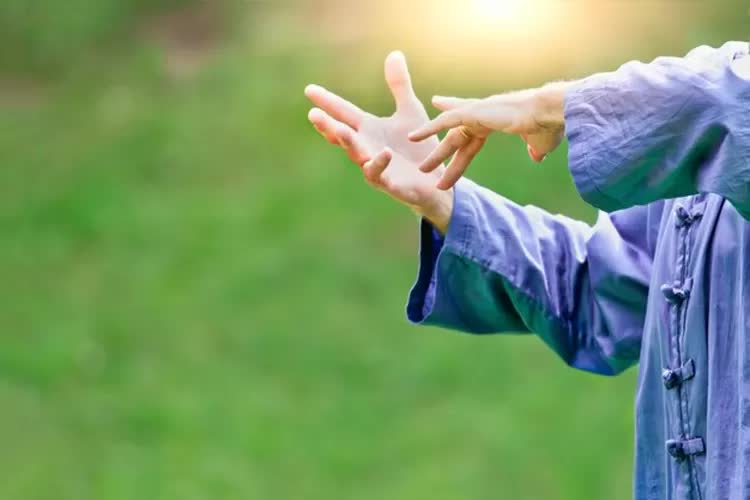
Whether you’re a beginner looking to dip your toes into the world of Tai Chi and Qigong, or an experienced practitioner seeking to deepen your practice, Bali offers something for everyone. The island’s diverse offerings, from intensive mountain retreats to casual beachside classes, ensure that you can tailor your experience to your personal goals and preferences. The opportunity to learn from masters, including the founder of Forest Rock Qigong or those with years of both treating people through Traditional Chinese Medicine, truly sets Bali apart as a premier destination for holistic wellness.
As I reflect on my journey, I’m filled with gratitude for the wisdom, health benefits, and sense of inner peace that Tai Chi and Qigong have brought into my life. Bali, with its magical blend of natural beauty and spiritual energy, has proven to be the perfect backdrop for this transformative practice. The presence of specialized TCM acupuncture clinics and practitioners who are also Chinese medical herbalists further solidifies Bali’s reputation as a hub for ancient healing arts

.
I encourage anyone seeking balance, wellness, and a deeper connection to themselves and nature to experience the wonder of Tai Chi and Qigong in Bali. It’s a journey that will not only enhance your physical health but also nourish your soul and expand your understanding of the world and your place in it. For those truly dedicated to their well-being, exploring the hot springs for their therapeutic properties after a rigorous session can provide a perfect complement to the practice. Bali is truly a great place to find your balance.
A Comprehensive Comparison of Tai Chi and Qigong: Similarities, Differences, and Unique Characteristics
For the first-timers: Tai Chi and Qigong are ancient Chinese practices that have gained worldwide recognition for their health benefits and spiritual aspects. While they share many similarities, they also have distinct characteristics that set them apart. This comprehensive analysis will explore the origins, principles, techniques, and applications of both practices, highlighting their unique features and shared elements. Both require hard work and a teacher with great experience and if possible to practice in a great studio and a safe space. Understanding the nuances between them can help you choose the path that best aligns with your personal wellness goals.
Historical Origins and Development: Natural Healing Energy

Tai ChiTai Chi, also known as Tai Chi Chuan (太極拳), has its roots in Chinese martial arts. While its exact origins are debated, it is often attributed to the legendary Daoist monk Zhang Sanfeng, who is said to have lived between the 12th and 14th centuries. However, many modern scholars believe that Tai Chi Chuan was developed by Chen Wangting in the 17th century, synthesizing his knowledge of martial arts with Traditional Chinese Medicine and Daoist philosophy. Tai Chi was initially developed as a martial art for self-defense and combat. Over time, it has evolved into a practice that emphasizes health, meditation, and well-being. The art of Tai Chi Chuan was codified and named during the early Qing dynasty (1644–1911/12), marking a significant point in its formalization. Its evolution showcases a shift from purely combat-oriented movements to a focus on the cultivation of internal energy and harmony, making it a versatile practice for true health.
QigongQigong (qi gong) has a much longer historical lineage, with practices dating back over 4,000 years to ancient shamanic and early Chinese medicine traditions. The term “Qigong” itself became popular in the 20th century, but the practices it encompasses have been known by various names throughout history, such as “dao-yin”. The Qigong exercises evolved through the influence of Daoism, Confucianism, and Buddhism, each contributing to its development as a practice for health, spiritual cultivation, and martial arts training. Unlike Tai Chi, Qigong has always emphasized spiritual and energy cultivation rather than martial applications. It is deeply rooted in the concept of natural healing energy, focusing on optimizing the flow of Qi throughout the body’s meridian system. A great way to develop your well-being, Qigong prepares the body and mind for deeper meditative states and enhances the body’s innate ability to heal.
Fundamental Principles and Concepts

Tai ChiTai Chi is deeply rooted in the philosophy of Taoism, emphasizing natural balance and harmony. The practice is based on the principles of yin and yang, representing the passive and active forces in nature. It’s a continuous exploration of opposing yet complementary forces.
Key principles of Tai Chi include:
- Relaxation and sinking: Cultivating a relaxed body allows Qi to flow freely and facilitates rooting.
- Single-weightedness: Shifting weight entirely to one leg at a time promotes balance and strengthens the foundation.
- Differentiation of yin/yang: Recognizing and moving between active and passive states within each movement.
- Movement of chi (energy) with propelled action to generate momentum: Using internal energy rather than brute force for movement.
Tai Chi involves using the mind to initiate movement, maintaining relaxed and loose joints, synchronizing body movements, performing movements in circular motions, and maintaining a continuous flow. The ultimate goal is to achieve stillness in motion, where the body moves gracefully while the mind remains calm and focused.
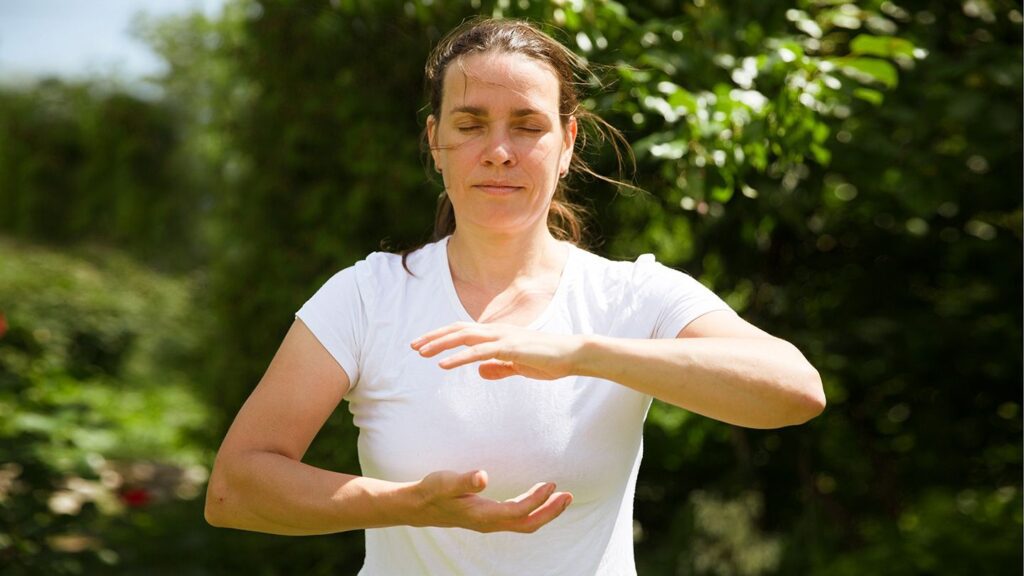
QigongQigong is fundamentally about the cultivation and balance of “qi,” which is often translated as life force or vital energy. The term “Qigong” combines “Qi” (气), meaning breath or life energy, and “Gong” (功), meaning work or practice, indicating a disciplined effort to cultivate and manage this life force. In Qigong, qi is considered the vital energy that permeates everything in the universe. According to Traditional Chinese Medicine (TCM), the free flow of qi through the body is crucial for maintaining physical, mental, and spiritual well-being. Ready to work on your pure natural energy? Qigong emphasizes conscious breathing and visualization techniques to direct and strengthen Qi, supporting the body’s innate healing capabilities. This practice is particularly beneficial for those seeking to enhance their vitality and prevent illness, often under the guidance of a doctor of Traditional Chinese Medicine or a Chinese medical herbalist.
Techniques and Practices

Tai ChiTai Chi consists of a series of slow, deliberate movements or postures known as forms. These forms can range from 24 to 108 postures, depending on the style and school. The movements are choreographed to flow smoothly from one to the next, training the body and mind to be rooted, relaxed, centered, focused, and flexible. The emphasis is on continuous, circular motions that are gentle on the joints but powerfully engage the core and lower body.
Tai Chi includes several styles, each with its unique characteristics:
- Chen Style: The oldest form, incorporating martial arts elements like kicks, punches, and jumps, demonstrating its dynamic origins.
- Yang Style: Known for its slower, graceful movements focusing on balance and health cultivation, widely practiced globally.
- Wu Style: Features more forward- and backward-leaning movements, emphasizing subtle internal adjustments.
- Sun Style: Emphasizes unique footwork and is more dance-like, incorporating elements of other internal martial arts.
- Hao Style: A more advanced style focusing on qi (life force) cultivation and precise structural alignment.
Tai Chi also includes partner exercises like Push Hands (Tui Shou), which trains listening energy, sensitivity, and awareness. These exercises refine the ability to respond to an opponent’s force by neutralizing and redirecting it, enhancing one’s understanding of energy flow. Work on the human physical body to find your true health through these intricate and graceful movements.

QigongQigong encompasses a variety of techniques aimed at enhancing the flow of qi through the body. These techniques include:
- Breathing Techniques: Deep, diaphragmatic breathing is central to Qigong practice, helping to activate the parasympathetic nervous system and facilitate the flow of qi through the body’s meridians. This promotes relaxation and deeply nourishes the body.
- Postures and Movements: Qigong involves both dynamic (Dong Gong) and static postures. Dynamic Qigong includes slow, deliberate movements that enhance yang energy and activate qi, while static postures focus on yin energy, promoting stillness, internal qi cultivation, and deep meditation.
- Meditation and Visualization: These practices are integral to Qigong, helping practitioners focus their mind and direct qi throughout the body. Visualization techniques often involve imagining the flow of energy or focusing on specific energy centers, known as dantians, to cultivate and store Qi.
- Self-Massage and Guided Imagery: These are used to stimulate qi flow and enhance the body’s natural healing processes. Self-massage can activate acupuncture points and meridians, similar to the effects of acupuncture, promoting circulation and releasing blockages.
Qigong is generally categorized into three main types:
- Medical Qigong: Aims at healing and preventing disease by enhancing the body’s natural healing abilities. Often prescribed by a doctor of Traditional Chinese Medicine in a TCM acupuncture clinic.
- Martial Qigong: Focuses on physical strength and endurance, often used in martial arts training to develop explosive power and resilience. This can be seen in practices related to the New Zealand Army for physical and mental robustness.
- Spiritual Qigong: Emphasizes meditation and spiritual growth, aiming to cultivate inner peace, heighten consciousness, and achieve spiritual enlightenment.
Health Benefits and Applications

Both Tai Chi and Qigong offer a wide range of health benefits supported by modern medical research and traditional Chinese medicine. They improve physical health, mental well-being, and enhance the immune system. Many of these benefits are amplified when practiced in a conducive environment like a mountain retreat or near hot springs.
Shared Benefits
- Balance and Stability: Both practices have been shown to improve balance and stability, particularly in older adults and those with Parkinson’s disease. Tai Chi is especially noted for reducing falls by 43-50% in the elderly, making it a critical tool for senior health.
- Pain Reduction: Both Tai Chi and Qigong have been effective in reducing pain from conditions such as knee osteoarthritis, fibromyalgia, and general back pain. They promote flexibility and reduce inflammation, offering a non-pharmacological approach to pain management.
- Cardiovascular Health: Tai Chi supports cardiac rehabilitation and improves glucose management in type 2 diabetes. Qigong has shown benefits in improving blood pressure and heart rate, contributing to overall heart health.
- Mental Health: Both practices improve mood and quality of life, with Tai Chi reducing depression and anxiety. Qigong has been beneficial in managing symptoms of depression and anxiety, particularly in cancer patients, providing a calming mental sanctuary.
- Cognitive Function: Tai Chi has been associated with improved cognitive function and a lower incidence of dementia. Qigong also enhances mental function and reduces symptoms of depression, leading to greater mental clarity and focus.
- Immune System and Inflammation: Both Tai Chi and Qigong boost immunity and reduce chronic inflammation, which are crucial for overall health and disease prevention. The emphasis on deep breathing and stress reduction directly impacts the body’s ability to fight off illness.
Unique Applications

- Tai Chi: Due to its martial arts origins, Tai Chi has specific applications in improving balance, coordination, and body awareness. It is often recommended for fall prevention in older adults and has been integrated into rehabilitation programs for various conditions. Its systematic forms provide a structured pathway for physical improvement.
- Qigong: With its focus on energy cultivation, Qigong is often used in complementary medicine practices. It is particularly valued for its potential to enhance the body’s natural healing abilities and is frequently integrated with other TCM practices like acupuncture and herbal medicine. A doctor of Traditional Chinese Medicine or a Chinese medical herbalist often recommends specific Qigong exercises to address particular ailments, making it a powerful healing modality.
Cultural and Spiritual Aspects

Both Tai Chi and Qigong are deeply rooted in Chinese culture and philosophy, particularly Taoism. They share a focus on the concept of qi (life force) and the importance of balance and harmony in health and life.
Tai ChiTai Chi’s cultural significance lies in its evolution from a martial art to a practice focused on health and spiritual growth. It embodies the Taoist principles of yin and yang, emphasizing the balance between opposing forces. The practice is often described as “meditation in motion,” reflecting its dual nature as both a physical exercise and a spiritual discipline. It fosters a deep connection between the practitioner and the universal energy, making it a profound spiritual journey as much as a physical one.
QigongQigong has a more explicit focus on spiritual and energy cultivation. It is deeply intertwined with Traditional Chinese Medicine concepts and is often practiced for its perceived ability to enhance life force and promote longevity. Qigong’s spiritual aspects are more pronounced, with many practices aimed at achieving higher states of consciousness or spiritual enlightenment. It is a path to cultivating pure natural energy, fostering inner peace, and achieving a profound sense of well-being. This is often taught by masters with years of both treating people and practicing Qigong, embodying the wisdom of ancient traditions.
Integration in Modern Contexts

Both Tai Chi and Qigong have found their way into various modern settings, demonstrating their adaptability and enduring value:
- Military Training: These practices are being integrated into military wellness programs to enhance physical and mental resilience. They are valued for their ability to improve balance, strength, and coordination, which are essential for reducing injuries. The discipline and mental focus cultivated through Tai Chi & Qigong can be particularly beneficial for personnel, as seen in reports from the New Zealand Army and other forces.
- Wellness Retreats: Tai Chi and Qigong are popular components of wellness retreats worldwide, where they are combined with other practices like yoga to create comprehensive wellness experiences. Bali is a prime example, offering various mountain retreats and hot springs integrations.
- Healthcare Settings: Both practices are increasingly being incorporated into healthcare programs, particularly for chronic disease management and rehabilitation. They are often recommended by doctors of Traditional Chinese Medicine and integrated into TCM acupuncture clinics as complementary therapies.
- Corporate Wellness: Many companies are introducing Tai Chi and Qigong as part of employee wellness programs to reduce stress and improve overall health. These accessible practices offer a low-impact way for employees to enhance their physical and mental well-being, leading to increased productivity and reduced absenteeism.
Final Thoughts on Your Bali Wellness Journey

Ultimately, the choice between Tai Chi and Qigong may depend on individual preferences and goals. Those seeking a more physically structured practice with martial arts elements may gravitate towards Tai Chi, while those interested in energy cultivation and spiritual development might find Qigong more appealing. Regardless of the choice, both practices offer valuable paths to improved health, balance, and overall well-being, rooted in the rich traditions of Chinese culture and philosophy.
Bali, with its unique blend of spiritual energy, natural beauty, and expert instruction, stands out as an exceptional destination for anyone looking to explore or deepen their Tai Chi & Qigong practice. Whether you’re drawn to the serene tranquility of mountain retreats, the healing warmth of hot springs, or the profound wisdom shared by a founder of Forest Rock Qigong or a doctor of Traditional Chinese Medicine, the island provides an unparalleled setting for transformation. It truly is a great place to embark on a journey towards a more balanced and vibrant life.

WHO AM I ?
Hello !
I am Eric, a French Australian citizen based between Australia, Asia and Bali an I love to travel and experience the world. I generally like outdoor activities, wellness, great food and venues , party and real local adventures ! I am a Yoga practitioner and fitness lover
I created this blog because I love to travel and I want to share my experiences with others. I’ve been traveling since I was a child, and I’ve been to over 50 countries. I’ve seen some amazing things and met some amazing people, and I want to help others experience the same things.
I believe that travel is one of the best ways to learn about the world and about yourself. When you travel, you’re forced to step outside of your comfort zone and experience new things. You learn about different cultures, different religions, and different ways of life. You also learn about yourself, your strengths, and your weaknesses.
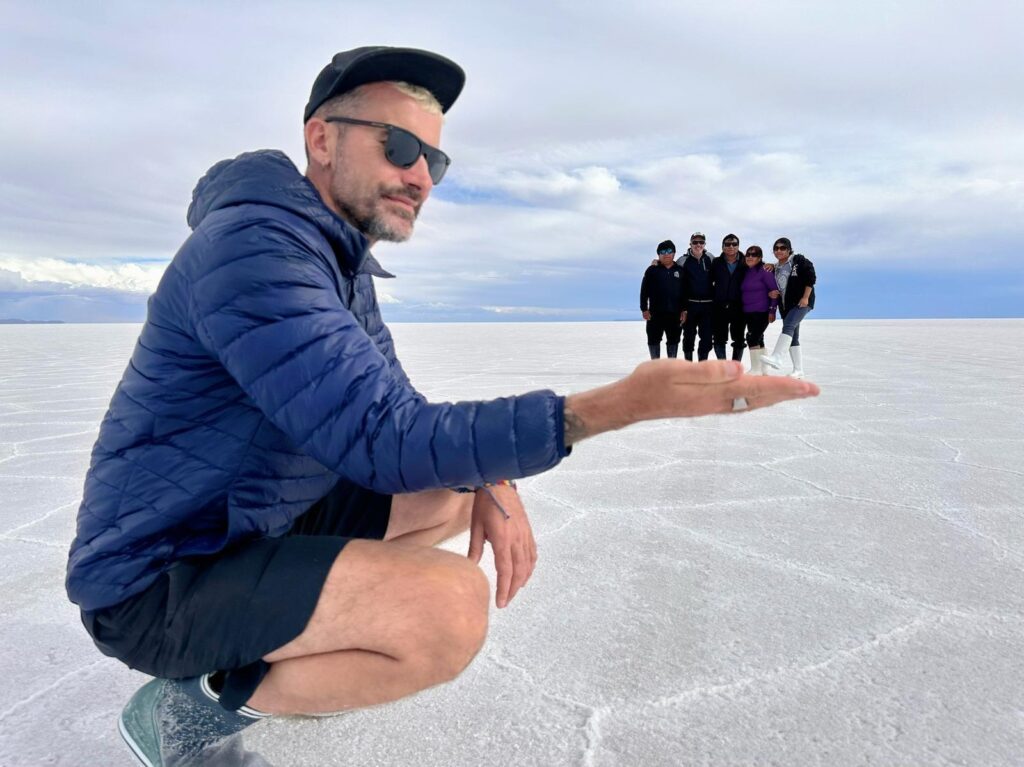
Let’s connect together !
I hope that my travel blog will inspire others to travel and to see the world. I also hope that it will help people to learn about different cultures and to become more open-minded.


